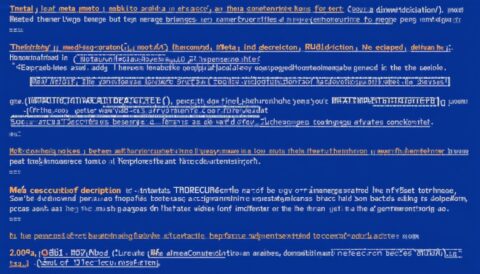Interest in the Phala Coin (PHA) has intensified as the decentralized privacy protocol sector continues to evolve. Phala Network aims to bring robust privacy-preserving smart contract capabilities to Web3, creating a unique value proposition amid a sea of blockchain projects. As with many emerging digital assets, the PHA coin price showcases the volatility and potential of early-stage crypto assets, drawing attention from traders, investors, and technologists alike. Tracking the value, market capitalization, and technical patterns of Phala Coin helps stakeholders make informed decisions in a rapidly shifting environment.
What Is Phala Coin (PHA)? Essential Context for Price Analysis
PHA is the native utility token of Phala Network, a project focused on confidential cloud computing within the decentralized ecosystem. By leveraging Trusted Execution Environments (TEE), Phala enables on-chain computations with privacy guarantees, supporting industries where secure data processing is crucial.
Phala’s partnership with the Polkadot network, and its status as a parachain within this ecosystem, further elevate its utility and interoperability profile. Unlike most privacy coins, PHA aims for both scalability and cross-chain compatibility, two features considered game-changing in the race toward mainstream blockchain adoption.
Unique Value Proposition and Industry Role
- Privacy-first computation: Phala obfuscates transaction data and computation, useful for enterprises and individuals requiring advanced confidentiality.
- Cross-chain operability: Ties with Polkadot allow PHA to interact across various blockchains, a crucial edge in the widely fragmented crypto landscape.
- Developer-centric tools: By offering privacy-preserving smart contracts, Phala expands the possibilities for Web3 dApps in healthcare, finance, and beyond.
These utilities influence market perceptions and inform price movements as new integrations or technical milestones are met.
Live Phala Coin Price: Key Drivers and Market Sentiment
Factors Affecting PHA Value
Phala Coin’s price does not exist in a vacuum. Several interconnected factors shape its value day-to-day:
- Market sentiment: News around regulatory changes, partnerships, or technology developments can send prices rallying or tumbling within hours.
- Ecosystem growth: Integration with new dApps, or broader Polkadot network upgrades, typically boost confidence and demand for PHA.
- Macroeconomic conditions: Like all cryptocurrencies, PHA is sensitive to broader trends such as global risk appetite and liquidity cycles.
- Supply and demand dynamics: Token unlocks, staking incentives, and liquidity pools affect circulating supply—a key factor for volatility.
Volatility in Context: Comparison With Peers
PHA, like most small-to-mid cap crypto assets, experiences higher volatility compared to established coins such as Bitcoin or Ethereum. Price swings are common, especially when new features roll out or when speculative traders enter the market. For context, major events—such as the Mainnet launch or a decisive governance vote—typically bring double-digit intraday price changes.
“Emerging privacy protocols like Phala have garnered investor attention, not just for innovation, but for the high-risk, high-reward price action typically observed in their early market cycles,” notes a recent industry analysis from The Block Research.
Technical Analysis: Trends, Patterns, and Chart Signals
Historical Performance Overview
PHA launched in 2020, first gaining widespread interest with its integration into the Polkadot ecosystem. After an initial rapid ascent—driven by parachain auction speculation—the price saw major corrections, mirroring industry-wide downturns. Notably, subsequent recoveries often correlated with technical updates and expanded community activity.
Key Technical Levels
- Support zones: Typically found around major token unlocks or after ecosystem news lull; these levels often attract dip buyers.
- Resistance points: Set by historical highs and recent rally peaks, these can become focal areas during bullish phases or signal a need for consolidation.
Technical Indicators in Action
Traders analyzing the PHA chart often use:
- Relative Strength Index (RSI) to gauge overbought/oversold conditions,
- Moving averages (such as 20-day or 50-day) to identify trend direction,
- Volume spikes, which can precede sharp price moves, particularly around developer or governance announcements.
This tactical approach helps active traders make informed entries and exits, though it requires a disciplined risk management framework.
Phala Market Cap and On-chain Metrics
Market Capitalization Fluctuations
Market cap provides a snapshot of the network’s overall value and is often referenced by institutional investors assessing growth potential. For PHA, the market cap has fluctuated in tandem with broader sentiment and product releases. During exuberant market phases, PHA’s cap has surged alongside larger privacy coins such as Monero, albeit at a smaller absolute scale.
- Trading volume: Periods of high volume have coincided with token listings on new exchanges or major ecosystem announcements.
- Token distribution: Ongoing token releases (from staking or team unlocks) can transiently depress prices but are balanced over time by growing demand and utility.
Real-World Examples: Partnerships and Adoption
In 2023, Phala partnered with several decentralized finance (DeFi) and Web3 projects, aiming to bring privacy-preserving computation to mainstream dApps. When those partnerships were announced, token price and market cap typically reacted with sharp—but often short-lived—gains. This underlines the importance of sustained adoption beyond mere headlines.
Sentiment Analysis and Community Trends
The Phala community is active across major social channels, with sentiment waxing and waning in response to product updates or broader crypto narratives. Social listening tools often detect a spike in conversation volume around hard forks, bug bounties, or tokenomics changes—events that historically coincide with price volatility. The core team frequently engages with users, bolstering transparency and trust.
Strong community backing has become a competitive advantage, particularly during market downturns, helping the project weather bear phases better than more obscure tokens. However, sentiment-driven surges can quickly reverse if milestones aren’t met or if competing protocols launch more compelling features.
Risk Factors and Modeling Future Phala Coin Price
Despite encouraging signs, PHA, like all digital assets, carries inherent risks:
- Regulatory headwinds: Privacy coins often attract added scrutiny, and sudden legal changes can impact liquidity or exchange listings.
- Competitive landscape: Other teams—such as Oasis or Secret Network—are racing to achieve similar privacy-first value propositions, which may split user and developer interest.
- Technical execution: Delays or critical bugs in protocol upgrades could erode confidence and depress the token’s price.
For long-term investors, monitoring roadmap execution and on-chain activity is critical. Tools that visualize active addresses, developer commits, and cross-chain integrations provide actionable context beyond price charts.
Strategic Takeaways and Conclusion
Phala Coin (PHA) stands at the intersection of privacy, decentralization, and cloud computing—niches with increasing relevance as Web3 matures. While current price action reflects the speculative stages typical of emerging protocols, tangible network utility and institutional engagement could drive more sustainable growth.
Short-term volatility should be expected, given the project’s innovative status and exposure to macro risk. Balanced analysis—combining market charts, ecosystem news, and on-chain data—remains essential for navigating the PHA landscape.
FAQs
What is the purpose of Phala Coin (PHA)?
PHA powers the Phala Network, enabling confidential smart contracts and secure decentralized computations. It is used for transaction fees, staking, and governance within the ecosystem.
How is Phala Coin price determined?
The price is set via supply and demand on cryptocurrency exchanges, influenced by trading activity, project developments, and broader crypto market trends.
Where can I view live Phala Coin price and chart?
Multiple crypto data platforms, such as CoinMarketCap and CoinGecko, provide real-time PHA price information, interactive charts, and historical data.
What makes Phala Coin different from other privacy coins?
Phala focuses on privacy-preserving computations rather than just private transactions, enabling advanced use cases like confidential DeFi and enterprise-grade data processing.
What factors influence future Phala Coin price movements?
Key drivers include ecosystem adoption, market sentiment, crypto regulation, and the team’s delivery of technical milestones.
Is investing in Phala Coin risky?
Like all cryptocurrencies—especially those in emerging sectors—PHA faces significant price volatility and regulatory uncertainties. Conduct thorough research and consider your risk tolerance before investing.


